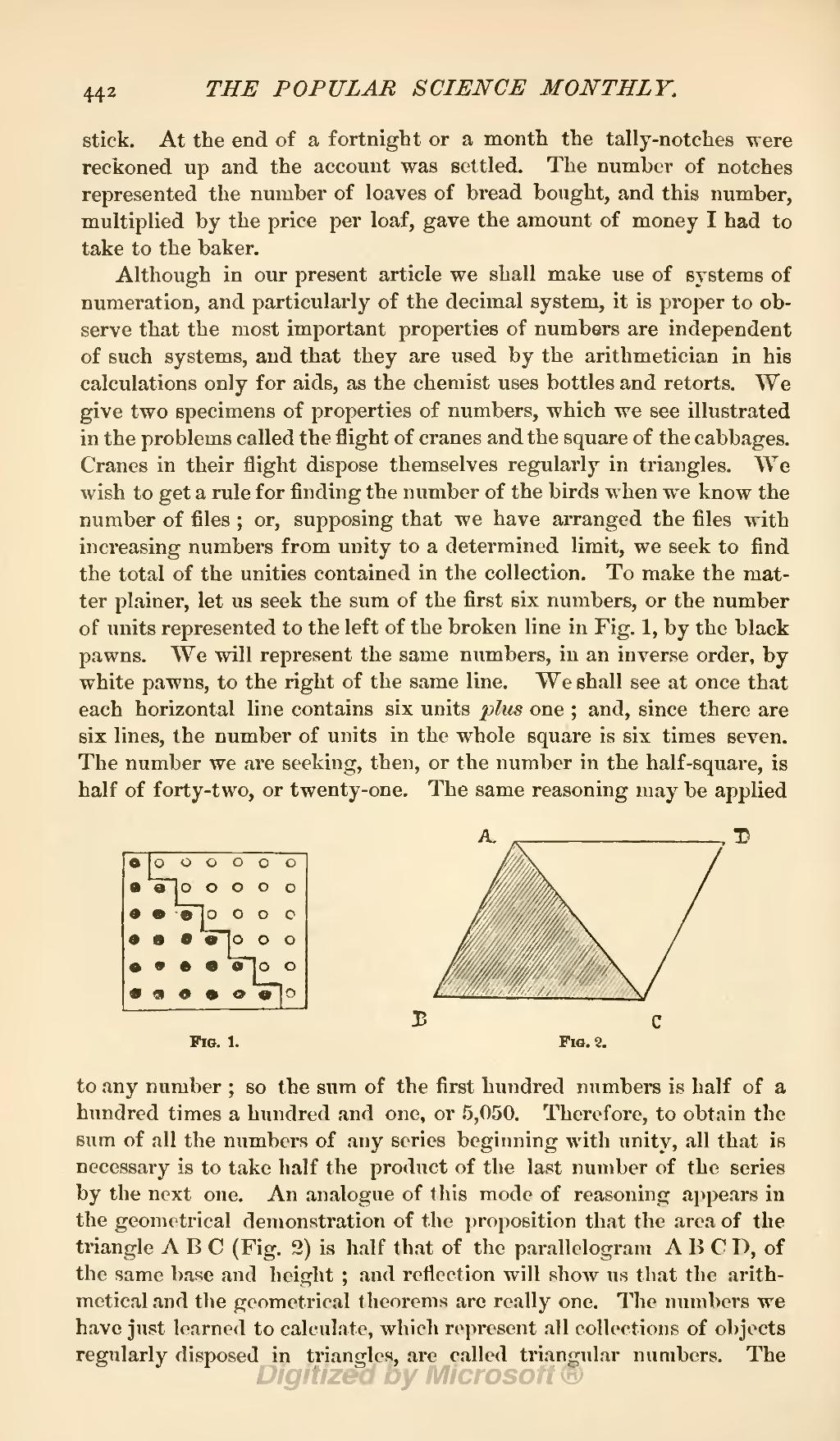stick. At the end of a fortnight or a month the tally-notches were reckoned up and the account was settled. The number of notches represented the number of loaves of bread bought, and this number, multiplied by the price per loaf, gave the amount of money I had to take to the baker.
Although in our present article we shall make use of systems of numeration, and particularly of the decimal system, it is proper to observe that the most important properties of numbers are independent of such systems, and that they are used by the arithmetician in his calculations only for aids, as the chemist uses bottles and retorts. We give two specimens of properties of numbers, which we see illustrated in the problems called the flight of cranes and the square of the cabbages. Cranes in their flight dispose themselves regularly in triangles. We wish to get a rule for finding the number of the birds when we know the number of files; or, supposing that we have arranged the files with increasing numbers from unity to a determined limit, we seek to find the total of the unities contained in the collection. To make the matter plainer, let us seek the sum of the first six numbers, or the number of units represented to the left of the broken line in Fig. 1, by the black pawns. We will represent the same numbers, in an inverse order, by white pawns, to the right of the same line. We shall see at once that each horizontal line contains six units plus one; and, since there are six lines, the number of units in the whole square is six times seven. The number we are seeking, then, or the number in the half-square, is half of forty-two, or twenty-one. The same reasoning may be applied

| Fig. 1. | Fig. 2. |
to any number; so the sum of the first hundred numbers is half of a hundred times a hundred and one, or 5,050. Therefore, to obtain the sum of all the numbers of any series beginning with unity, all that is necessary is to take half the product of the last number of the series by the next one. An analogue of this mode of reasoning appears in the geometrical demonstration of the proposition that the area of the triangle ABC (Fig. 2) is half that of the parallelogram A B C D, of the same base and height; and reflection will show us that the arithmetical and the geometrical theorems are really one. The numbers we have just learned to calculate, which represent all collections of objects regularly disposed in triangles, are called triangular numbers. The
